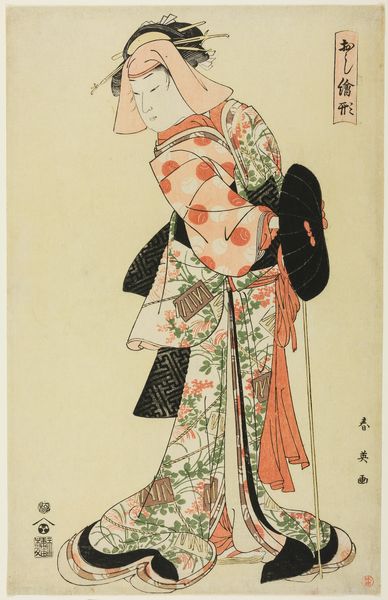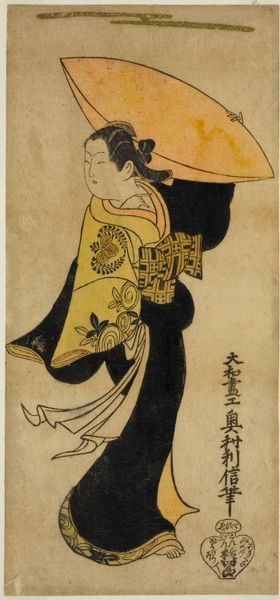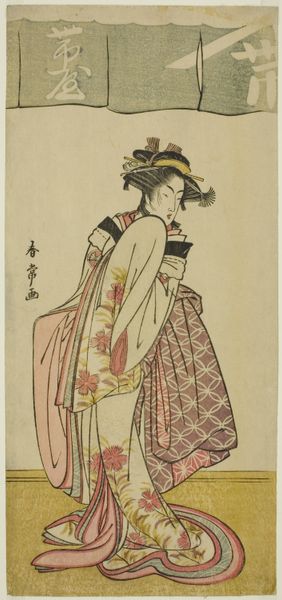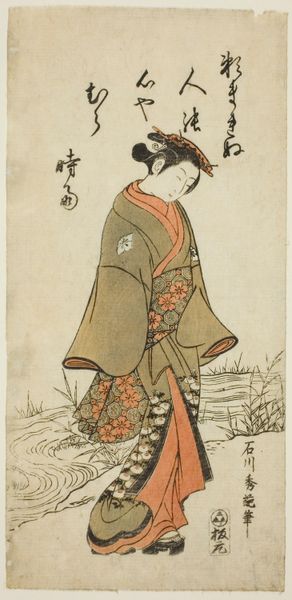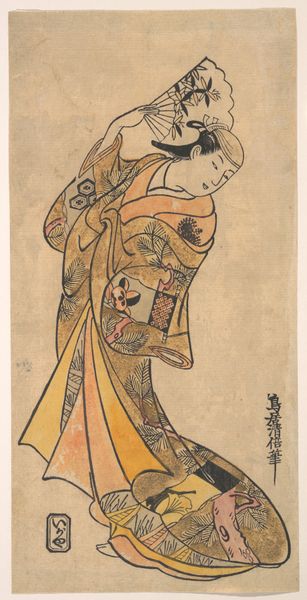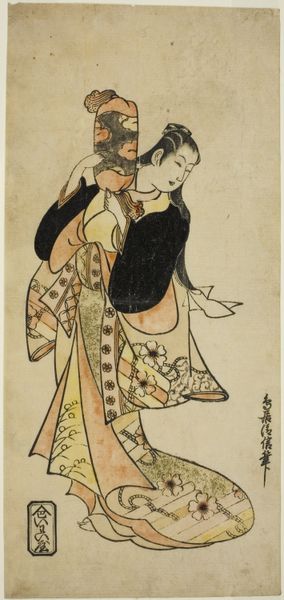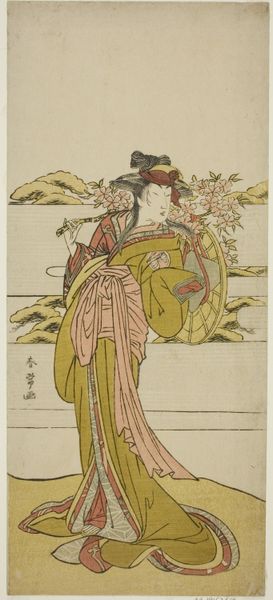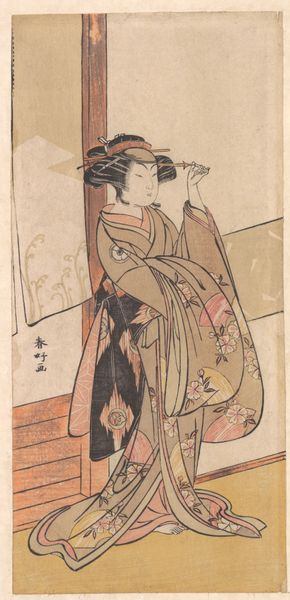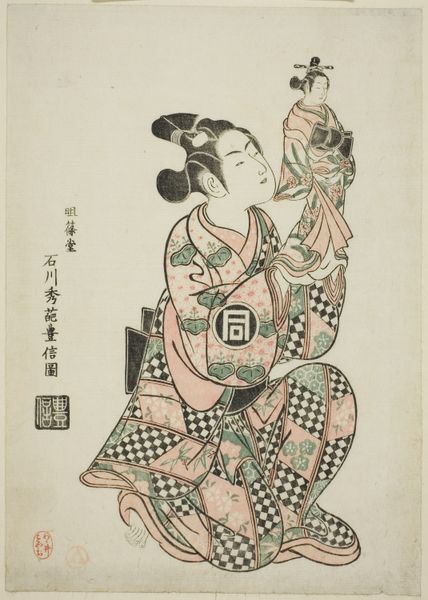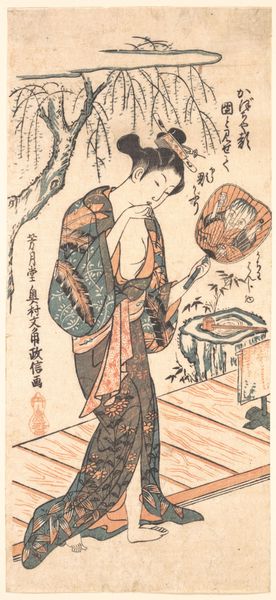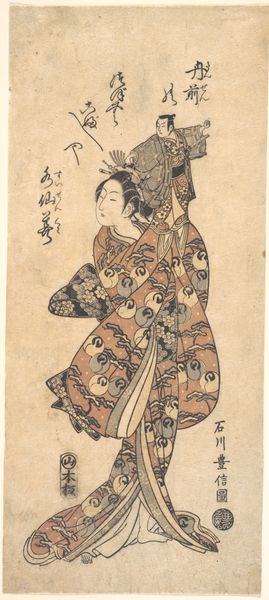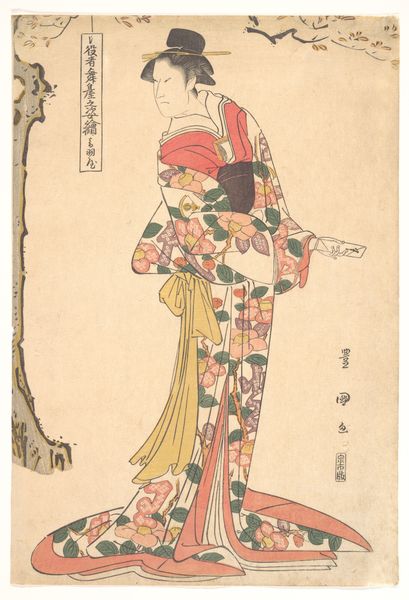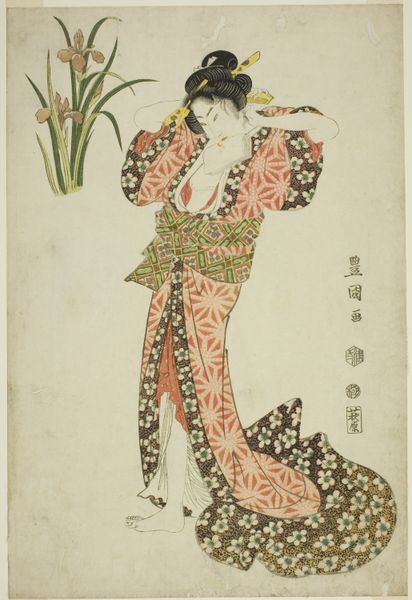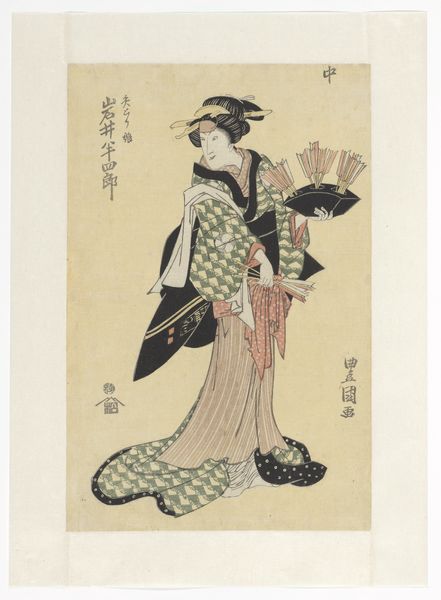
#
portrait
# print
#
asian-art
#
ukiyo-e
#
figuration
#
genre-painting
Dimensions: H. 11 1/2 in. (29.2 cm); W. 6 in. (15.2 cm)
Copyright: Public Domain
Curator: Allow me to introduce a captivating example of Ukiyo-e artistry: Masafusa’s "Girl with Fan," a print created between 1750 and 1770. It resides here at the Metropolitan Museum of Art. Editor: My first thought? Quiet elegance. The delicate lines and subdued palette give her an almost ethereal presence, wouldn’t you say? The way she holds that fan suggests a certain formality. Curator: Absolutely. The fan is more than a simple accessory. It speaks of rank, propriety, and perhaps hidden thoughts. Fans often signified veiled communication and subtle expression in Edo-period society. What might her downward glance imply? Is it deference, shyness, or maybe something more… calculating? Editor: I’m more intrigued by the overall composition. Notice the dynamic between the vertical lines of her kimono and the circular shape of the fan. It is quite remarkable! Curator: And observe how her attire communicates so much. The flowing sleeves, the detailed obi—each element is deliberate, connecting her to notions of beauty and grace that persisted across class boundaries at that time. But more personally, it seems her look says 'I am wealthy but also bound to tradition.' Editor: I also can't help but to admire the level of detail achieved through woodblock printing. Each stripe on the kimono, the floral patterns—the precision is remarkable, lending it an almost textural feel despite its flatness. How were those effects possible? Curator: Woodblock printing demands exacting craftsmanship; multiple blocks for each color, painstakingly carved and aligned. It’s a labor-intensive process requiring a profound understanding of materials. A small amount of error and everything is destroyed! It echoes the social constraints this young woman is operating within, no? Editor: I suppose so! Looking again, the image appears not just as an aesthetic object, but as a vessel containing social complexities, power relations and even an inner narrative. Curator: Exactly. And the continuity is unbroken. So much cultural memory and insight bound up in something that looks at first to be no more than a decorative object! Editor: That is to say: a work of art rewards repeated close looking—which reveals structures, signs, and hidden symbolic languages we otherwise miss.
Comments
No comments
Be the first to comment and join the conversation on the ultimate creative platform.
